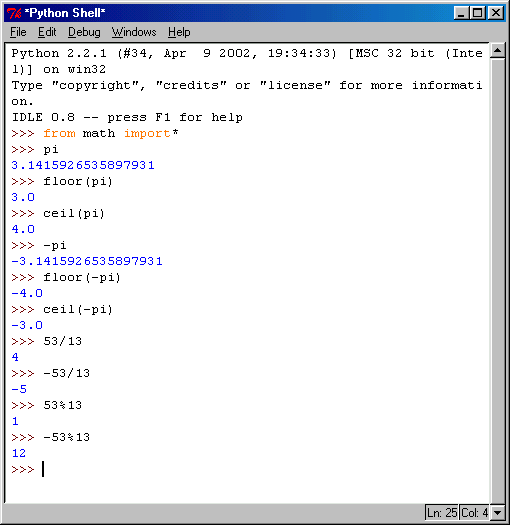

19.1: Balancing Redox Reactions in Acidic or Basic Solution (4). 18.7: Thermodynamics in Biological Systems (1). 18.4: Change in Entropy of the Universe (3). 18.3: Change in Entropy of a System (4). 18.1: Spontaneous and Nonspontaneous Processes. 17.6: Separating Ions with Precipitation (3). 17.5: Effect of Factors on Solubility (5). Chapter 17: Equilibria: Solubility and Acid-Base. 16.11: Acidic and Basic Oxides and Hydroxides (6). 16.10: Acidic and Basic Salt Solutions (1). 16.9: Effect of Molecular Structure on Acid Strength. 16.7: Properties of Conjugate Acids and Bases (13). 15.4: Solving Equilibrium Expressions (1). 14.4: Effect of Reaction Rate on Temperature (12). 14.3: Effect of Reactant Concentration on Time (13). 
14.2: Effect of Reaction Rate on Reactant Concentration (11).13.6: Calculations with Colligative Properties.13.4: Effects of Temperature and Pressure on Solubility.13.3: Molarity, Molality, and Percent by Mass (15).13.2: Solubility on the Molecular Level (6).12.4: Medical Applications for Modern Materials.11.3: Lattice Structure of Crystalline Solids (4).10.1: Pressure and Characteristics of Gases (1).9.7: Review of Bonding Theories and Delocalization (1).9.1: Molecular and Electron Domain Geometry (10).Chapter 9: Molecular Geometry, Hybridization, and Bonding.8.4: Electronegativity and Dipole Moment (9).8.3: Bonding in Covalent Molecules (10).Chapter 8: Introduction to Chemical Bonding.7.5: Electron Configuration of Ions (5).Chapter 7: Periodic Trends and Electron Configuration.6.9: Electron Configurations and the Structure of the Periodic Table (3).
 6.8: Electron Configuration of Atoms (8). Chapter 6: Quantum Theory and Electron Configurations. 5.6: Standard Enthalpies of Formation and Reaction (3). 4.6: Quantitative Analysis with Aqueous Reactions. Chapter 4: Reactions in Aqueous Solution. 3.5: Determination of Empirical Formula by Combustion (1). 3.3: Writing and Balancing Chemical Equations (10). 2.7: Identifying and Naming Ionic Compounds (14). 2.6: Identifying and Naming Molecular Compounds (11). 2.3: Mass, the Number of Subatomic Particles, and Isotopes (1). Chapter 2: Atomic Structure and the Periodic Table. 1.4: Physical and Chemical Properties (5). T: WebAssign Answer Templates and Tutorials (4). Chapter T: WebAssign Answer Templates and Tutorials. If you are involved in analyzing, acquiring, or recommending investments or lending instruments, you can benefit from using FINCALC 6.0. FINCALC has been sold to individuals planning for retirement, or who need loan interest for tax purposes, or who need to manage investments better, or who need to evaluate which loan option is least expensive. It makes no difference whether you are a business or an individual, you can still benefit from using the program. FINCALC has been sold to gift shops, lawyers, bankers, insurance agents, real estate agents, finance companies, car dealers, and retailing companies. As an example, you can quickly determine the markup percent, or the cost of an item given the price and markup percent, or the price, given a markup percent and cost. FINCALC 6.0's business calculations are extremely helpful for retailing companies. The investment portion of the program tracks stocks and mutual fund investments and provides up-to-date yield and profitiability information at a glance. If for example, you need to know the time value of withdrawals given a starting balance, or the amount of money your investment will be worth given a period of time, APR, compounding, and recurring deposit amount, FINCALC 6.0 will make these calculations easy for you.
6.8: Electron Configuration of Atoms (8). Chapter 6: Quantum Theory and Electron Configurations. 5.6: Standard Enthalpies of Formation and Reaction (3). 4.6: Quantitative Analysis with Aqueous Reactions. Chapter 4: Reactions in Aqueous Solution. 3.5: Determination of Empirical Formula by Combustion (1). 3.3: Writing and Balancing Chemical Equations (10). 2.7: Identifying and Naming Ionic Compounds (14). 2.6: Identifying and Naming Molecular Compounds (11). 2.3: Mass, the Number of Subatomic Particles, and Isotopes (1). Chapter 2: Atomic Structure and the Periodic Table. 1.4: Physical and Chemical Properties (5). T: WebAssign Answer Templates and Tutorials (4). Chapter T: WebAssign Answer Templates and Tutorials. If you are involved in analyzing, acquiring, or recommending investments or lending instruments, you can benefit from using FINCALC 6.0. FINCALC has been sold to individuals planning for retirement, or who need loan interest for tax purposes, or who need to manage investments better, or who need to evaluate which loan option is least expensive. It makes no difference whether you are a business or an individual, you can still benefit from using the program. FINCALC has been sold to gift shops, lawyers, bankers, insurance agents, real estate agents, finance companies, car dealers, and retailing companies. As an example, you can quickly determine the markup percent, or the cost of an item given the price and markup percent, or the price, given a markup percent and cost. FINCALC 6.0's business calculations are extremely helpful for retailing companies. The investment portion of the program tracks stocks and mutual fund investments and provides up-to-date yield and profitiability information at a glance. If for example, you need to know the time value of withdrawals given a starting balance, or the amount of money your investment will be worth given a period of time, APR, compounding, and recurring deposit amount, FINCALC 6.0 will make these calculations easy for you. 
Calculations for retirement planning and investment annuities are possible. FINCALC 6.0 will display and print loan amortization schedules considering four types of insurance, miscellaneous fees and charges, and real estate taxes. The program acts like a loan calculator filling in missing terms and payment information.
FINCALC 2 5.3.018 WEBASSIGN WINDOWS
"FINCALC 6.0" is a Windows program designed to handle differing financial calculations related to investments and lending.








 0 kommentar(er)
0 kommentar(er)
